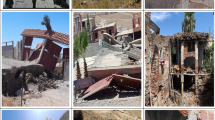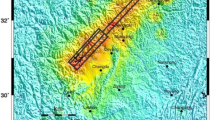Abstract
After the Wenchuan earthquake, The Institute of Engineering Mechanics (IEM) performed an extensive and comprehensive damage survey of the large area affected by the earthquake. Seismic codes in China were revised and updated after the catastrophic 1976 Tangshan earthquake. However, until the Wenchuan earthquake the seismic code provisions were not tested by a large earthquake. Some 5000 buildings, exposed to intensities VI to XI, were investigated in great detail immediately after the earthquake. The investigation and the surveys covered both seismically designed (fortified) buildings and non-code compliant buildings. In the process a comprehensive and documented database of building performance was compiled, which would be very valuable for further research, improvement of the seismic code, improvement of the construction practices, and disaster mitigation planning and management. The database dominantly contains the most prevalent structural types in the region: 1) reinforced and un-reinforced masonry structures; 2) masonry buildings with reinforced frame in the lower stories, and 3) reinforced concrete frame structures. Observed damage characteristics of various structural types were studied and documented, damage patterns analyzed, and corresponding damage probability matrices derived from the data collected during this survey. It is our hope that this investigation and the published material will be utilized for the revision of the seismic codes, leading to a higher level of life safety and damage reduction in future earthquakes.
Similar content being viewed by others
References
Yin Z Q. Seismic Hazard and Loss Prediction Method. Beijing: Beijing Earthquake Press, 1996
Yin Z Q, Yang S W. Earthquake Loss and Fortification Criterion. Beijing: Beijing Earthquake Press, 2004
Li S Z. The Earthquake Disaster Assessment. Beijing: Beijing Earthquake Press, 1996
Sun B T, Yan P L, Hu C F, et al. Overview on seismic damage to different structures in Yingxiu Town during Wenchuan earthquake. Earthquake Eng Eng Vib, 2008, 28: 1–9
Zhao X. Elastoplastic Seismic Responses Analysis of Steel Frame Considering theContributions of Concrete Floor Slabs and Masonry Filled Walls. Dissertation of Doctoral Degree. Shanghai: Tongji University, 2005
Wei L. The Seismic Design Handbook of Multistory and Tall Reinforced Concrete Structure. Beijing: Beijing Earthquake Press, 1990
The National Standard in the People’s Republic of China, Code for Acceptance of Constructional Quality of Concrete Structures (GB50204-2002). Beijing: China Architecture & Building Press, 2001
Author information
Authors and Affiliations
Corresponding author
Rights and permissions
About this article
Cite this article
Sun, B., Zhang, G. The Wenchuan earthquake creation of a rich database of building performance. Sci. China Technol. Sci. 53, 2668–2680 (2010). https://doi.org/10.1007/s11431-010-4082-5
Received:
Accepted:
Published:
Issue Date:
DOI: https://doi.org/10.1007/s11431-010-4082-5




